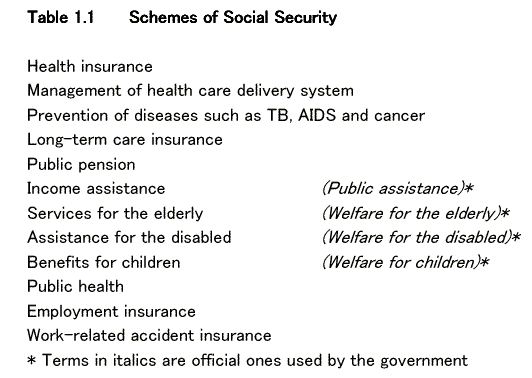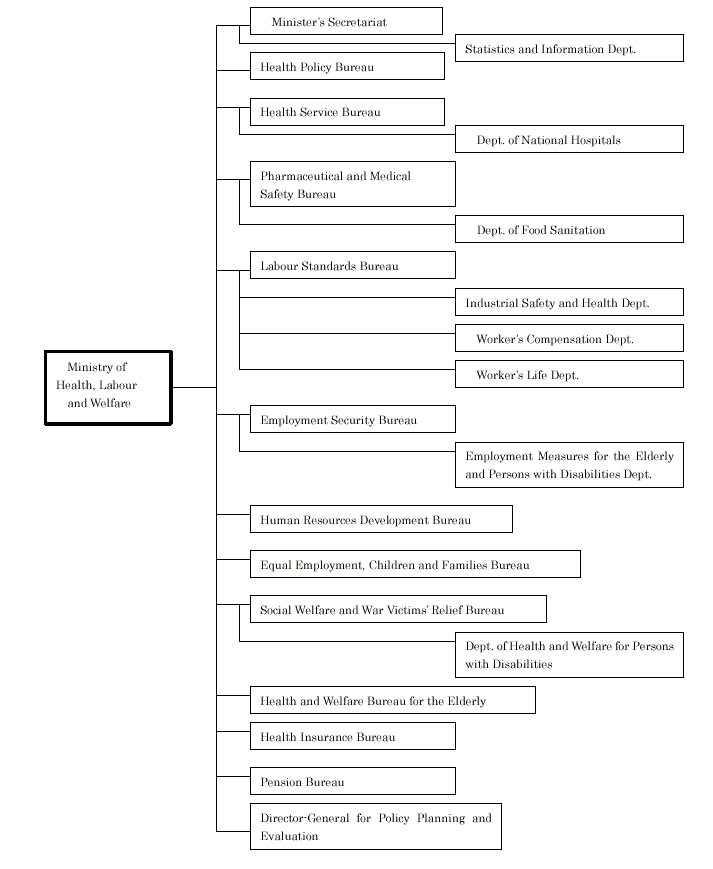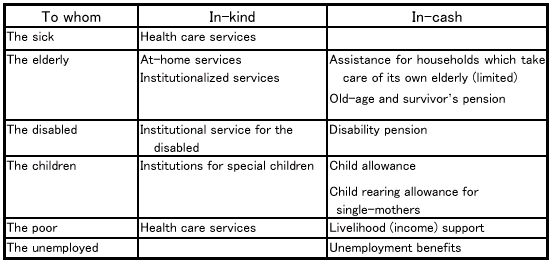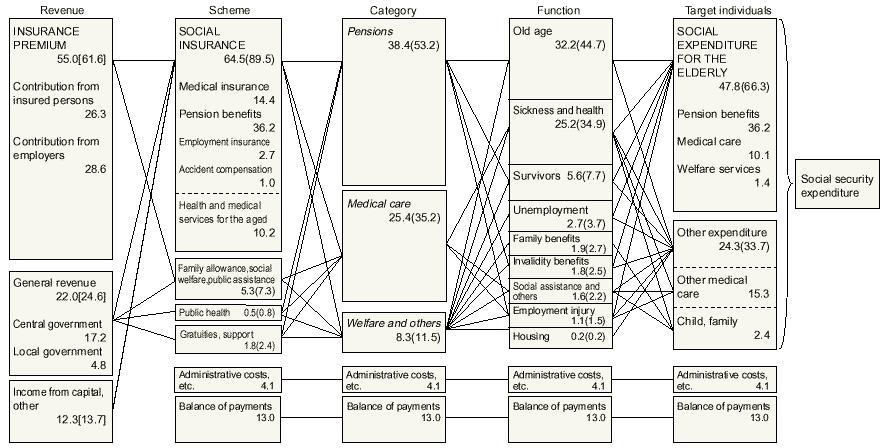
As with other countries, the source of social security in Japan could be found in charity-oriented communal activities for the poor in a pre-modern era. In the modern era, while legislations such as Indigent Person's Relief Regulation (1874) and Poor Relief Law (1932) were enacted, the modern social security system based on the state's responsibility in sharing and mitigating social risk of the population did not start until after the World War II with the inclusion in the Constitution of the Article 25:
"(1) All people shall have the right to maintain the minimum standards of wholesome and cultured living. (2)The State must make efforts to promote and expand social welfare, social security and public health services to cover every aspect of the life of the people".
Starting with the urgent need to relieve the war-stricken people, the system of "social security" has gradually extended its reach. The term "social security" means in Japan a range of social policy that is the task of a welfare state, from income security to the public health. Table 1.1 shows the list of major schemes defined as social security in Japan. The main organ responsible for overseeing and carrying out these schemes is the Ministry of Health, Labour and Welfare (MHLW). Table 1.2 shows its organization chart.
2. Universal health insurance and universal pensionThe year 1961 was memorable in the history of Japanese social security. Two laws for universal health insurance and pension were enacted in 1958 and 1959, respectively, and enforced in 1961. They have become the two main pillars of Japanese social security system. Together with the Public Assistance Law (1946) and the Employment Insurance Law (1974), they are the main institutions of social policy to mitigate the risk of sickness, accidents, unemployment and old age.

Social security systems such as those for health care, long-term care, public pension, employment and work-related accident take the form of social insurance. The public insurance system provides in-cash and in-kind benefits to insured persons (and their family) in case of downfalls within their life cycle. The participation for these schemes is mandatory to all citizens and their employers in case they are employed. The contribution to the schemes is shared by all insured, in most cases, according to their ability to pay (income). Thus, the function of social insurance is to share the risk among insured persons, and at the same time, to redistribute income among them.
On the other hand, measures identified as social welfare, such as public assistance (meaning income maintenance for the poor, in Japan) and services and benefits for the elderly, children and the disabled are mostly paid out of the general budget of the government (tax). There is a continuing debate, especially on the pension schemes, between those who claim converting some of the insurance-based schemes to the tax-based schemes and those who prefer to maintain the link between the contribution and benefit through an insurance system.
Table 1.2 Organization Chart of the Ministry of Health, Labor and Welfare

Kinds of benefits provided through the social security system are either in-kind or in-cash. Table 1.3 lists major types of benefits by in-kind/in-cash classification.
Table 1.3 Major Types of Service by In-kind or In-cash Classification

Service providers of social security, such as hospitals and clinics for the health care, day-care centers and institutions for the elderly long-term care, rehabilitation centers and support centers for the disabled, and so forth, can be both public or private. For example, there are public hospitals and private hospitals, and from the view point of the user, there is no difference. They both operate under the supervision of the Ministry of Health, Labour and Welfare (MHLW) and the prefectures.
Figure 1.1 shows a breakdown of social security revenue and expenditure as defined by the International Labor Organization. Insurance premium accounts for 60% of the total revenue and government contributions and others for the rest. The expenditure for the public pension takes up nearly a half of the entire expenditure, and for the health insurance, a little more than one third.
Figure 1.1 Revenue and Expenditure of Social Security: Fiscal Year 1998 : (Units: Trillion of yen, %)

Note:
- FY1998 social security revenue amounted to 89.2 trillion yen (excluding transfer from other systems). The figure in square brackets represents the ratio to the total social security revenue.
- FY1998 social security expenditure amounted to 72.1 trillion yen. The figure in parentheses represents the ratio to the total social security expenditure.
- Arrows to "Administrative costs" and "Balance" in the Scheme column are omitted.